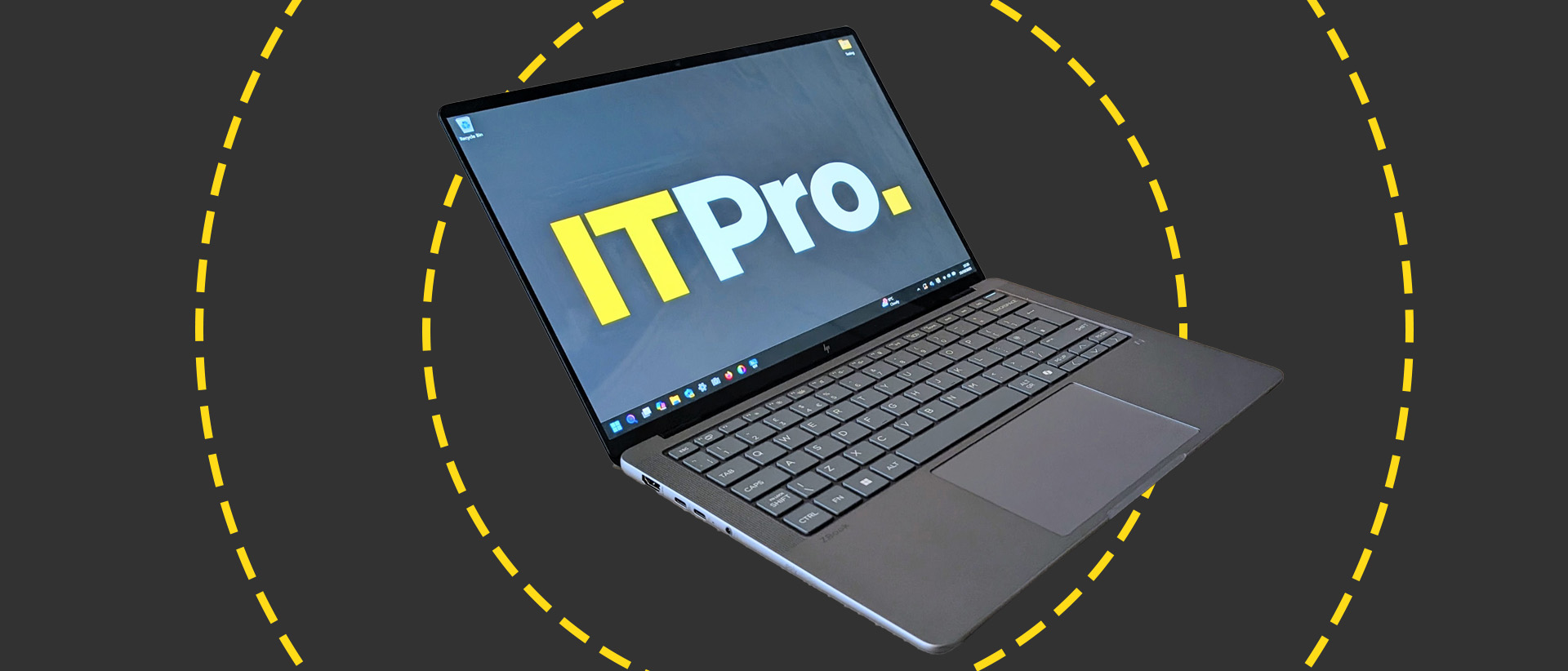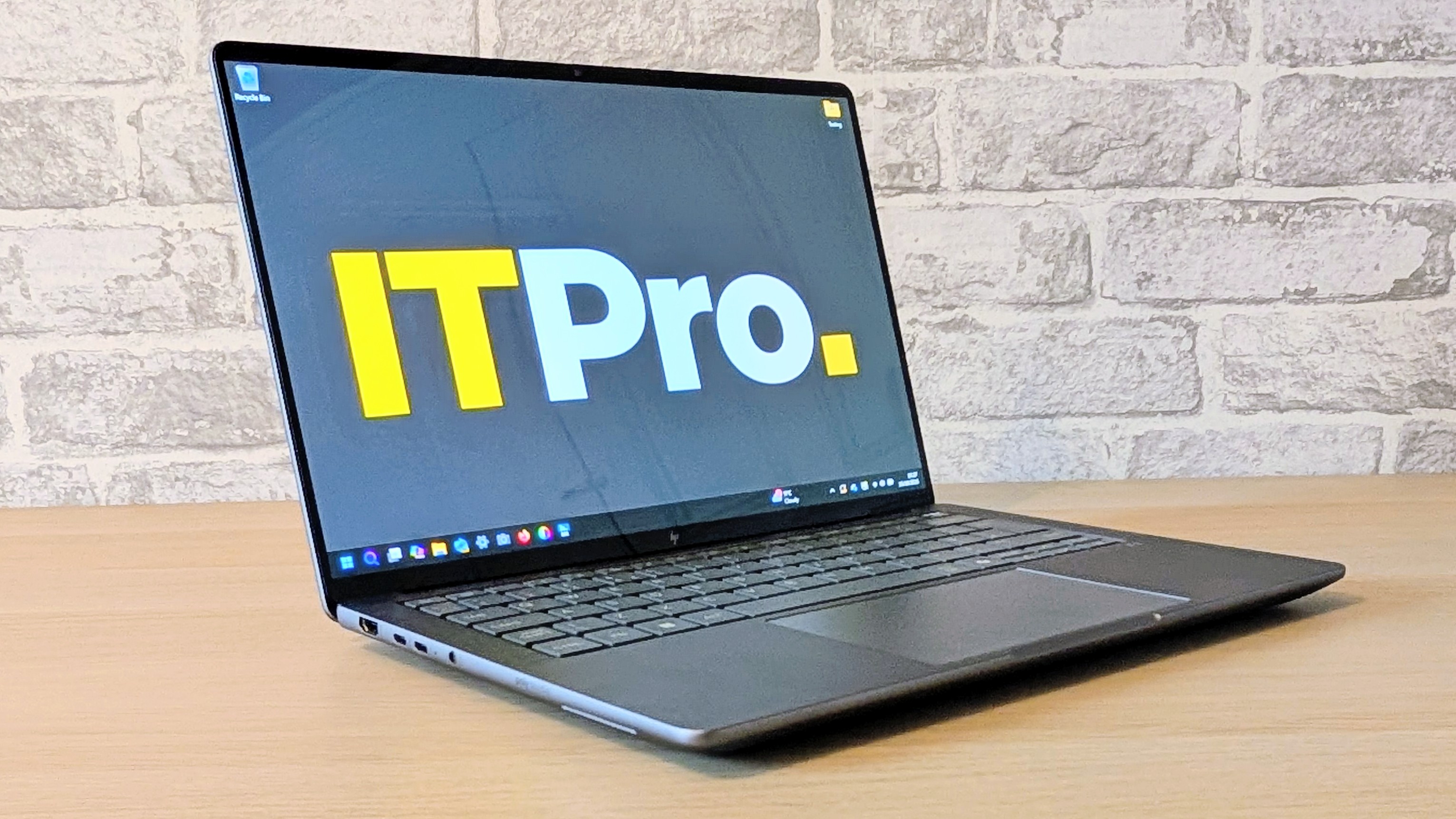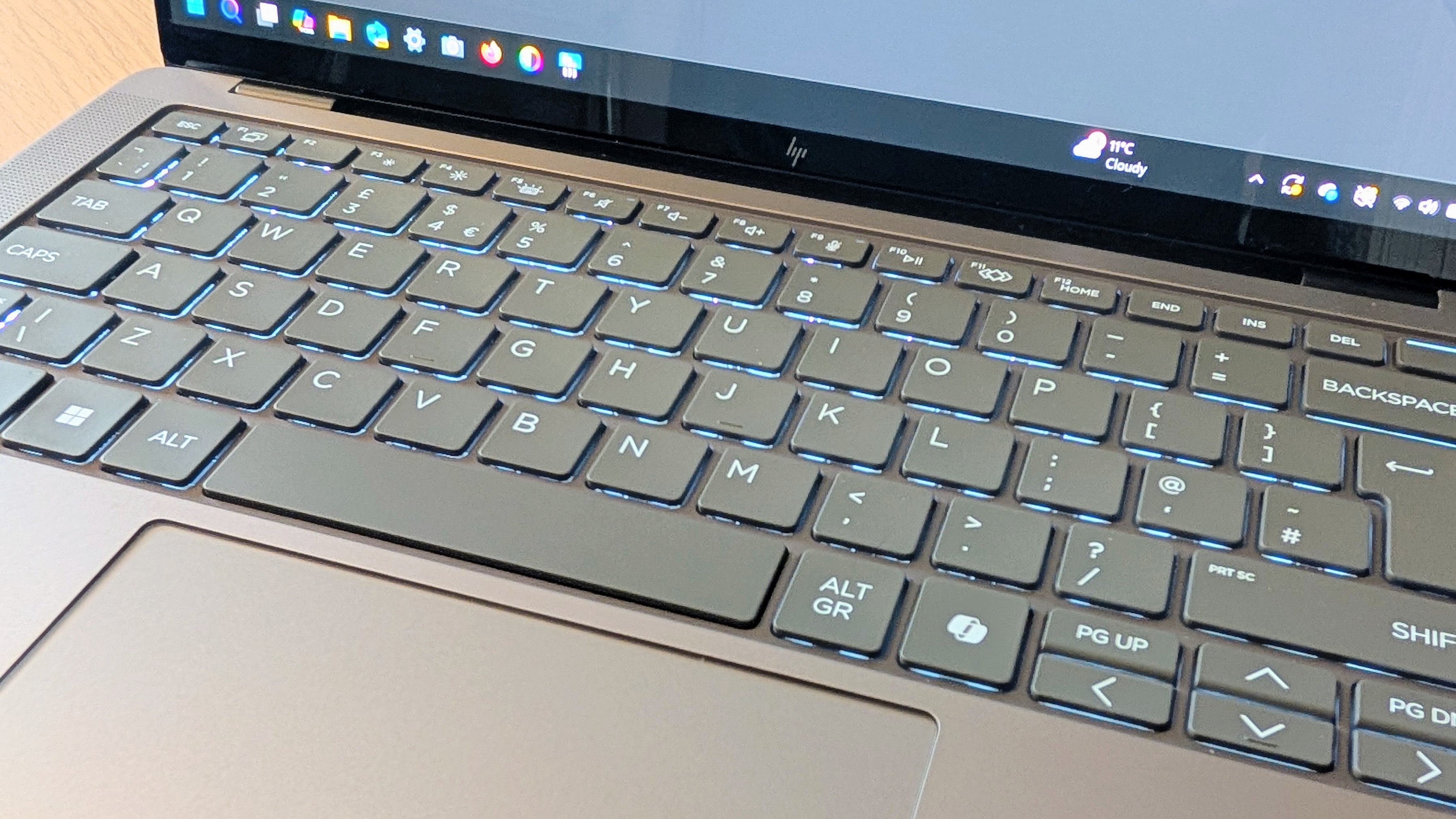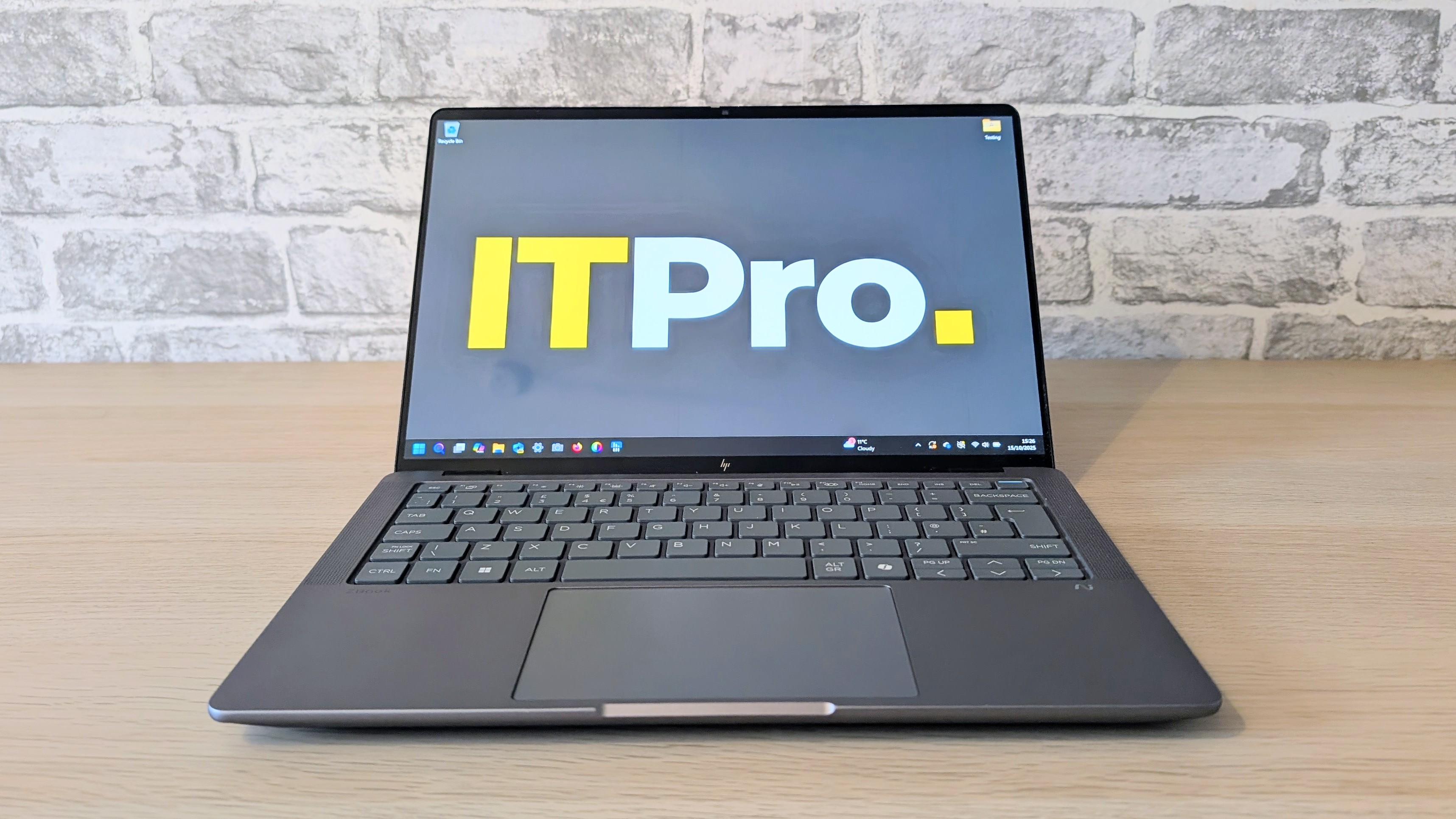The HP ZBook Ultra G1a offers truly impressive levels of performance – a genuine game-changer
AMD's new Ryzen AI Max+ 395 redefines what we can expect from a laptop chipset with an integrated GPU and delivers outstanding performance

-
+
Stunning graphics performance
-
+
Thunderous sound system
-
+
Vibrant 120Hz OLED touchscreen
-
+
Solid, tactile keyboard
-
-
Mediocre battery life
-
-
No space for a recond SSD
-
-
No SD card reader

Squeezing genuine desktop performance into a compact laptop is easier said than done; the balance between performance, battery life, size, weight, and thermals is hard to get right, and this is one reason Apple's 14in MacBook Pro has been so successful. It gets the balance absolutely right. The HP ZBook Ultra G1a aims to follow suit.
AMD's Ryzen AI 300 Series processors with their potent integrated GPUs have been threatening to let Windows laptop makers knock the MacBook off its perch since their launch earlier this year. Now we finally have one in for testing: HP's new ZBook Ultra G1a, which is built around the range-topping AMD Ryzen AI Max+ 395.
HP ZBook Ultra G1a: Design
The ZBook Ultra shares a strong familial similarity to HP's EliteBook business laptops, but that's no bad thing. It's a solid, smart, and sober affair made from aluminum and is MIL-STD-rated for resistance to shock, temperature change, and particulate ingress.
There's only one colorway, which HP calls Meteor Silver but which we'd describe as grey. The paint finish does a good job of keeping greasy fingerprints at bay, so we'll forgive the rather dowdy color scheme.
At 1.57Kg and 312 x 215 x 18mm, the new HP is very similar in terms of both weight and size to the MacBook Pro, which hardly comes as a surprise given that the smaller MacBook and the ZBook Ultra are targeted at the same customers.

On the left side of the ZBook, you'll find one Thunderbolt 4 and one 10Gbps USB-C port, an HDMI 2.1 video output, and a 3.5mm audio jack. On the opposite side is a second Thunderbolt 4 and a 10Gbps USB-A port, along with a Kensington lock.
We'd have liked to have seen Thunderbolt 5-spec ports and an SD card reader. Both are features of the latest MacBook Pro. Incidentally, the USB-C 3.2 Gen 2 port is also capable of pumping out DisplayPort video. The MediaTek MT7925 WLAN card is right up to date, supporting Wi-Fi 7 and Bluetooth 5.4
Sign up today and you will receive a free copy of our Future Focus 2025 report - the leading guidance on AI, cybersecurity and other IT challenges as per 700+ senior executives
Getting inside the ZBook Ultra is easy enough, but once in, you'll find no space for a second SSD and no option to add more RAM; what there is is soldered in place, as is the WLAN card. The Samsung-made 1TB SSD in our review machine proved a sprightly performer, recording sequential read and write speeds of 5,209MB/s and 2,930MB/s, respectively.
HP ZBook Ultra G1a: Keyboard, touchpad and webcam
The keyboard has quite a few positives and only one or two negatives. In the former, we must mention the rock-solid deck, the tactile, slightly rubberized keycaps, and the perfectly calibrated key travel and end-stop. There's a handy two-stage white backlight too.
In the negative column, the action of the space bar felt rather looser than the rest of the keyboard, and the cursor buttons are all half-height, with the spaces above the left/right keys occupied by the page up and down keys rather than left open as on the MacBook Pro keyboard. It makes the bottom right corner of the keyboard look and feel a wee bit crowded. We've no complaints at all about the glass touchpad, though, which at 125 x 80mm is nicely sized and has a sharp and quiet click-action.

The 1440p webcam is crisp and bright, but has a slightly over-warm color balance, which can sometimes give images an orange tint. The camera array supports Windows Hello facial recognition and the full range of Windows Studio enhancements. There's also a manual slide-across shutter to prevent unwanted surveillance. If you prefer, you can log into Windows using the fingerprint scanner built into the on/off button in the top-right corner of the keyboard.
HP ZBook Ultra G1a: Display
Our review machine came with the optional Samsung-made 2,880 x 1,800 120Hz OLED touchscreen. We found it to be an impressive display with good maximum brightness levels of 400cd/m2 in SDR mode and 630cd/m2 from a 10% screen area in HDR mode.
Gamut coverage is wide, with 162.6% of the sRGB, 115.2% of the DCI-P3, and 112.1% of the AdobeRGB color volumes accounted for. Out-of-the-box color accuracy was good rather than perfect, with a Delta E reading of 1.9 vs the DCI-P3 profile.
On such a wide gamut display, recalibrating to an even lower figure should not be a challenge if you need to undertake highly color-critical work. Assuming, of course, you have a colorimeter to hand.
Numbers aside, to the naked eye, the ZBook Ultra's screen is a joyously colorful and limpid affair and is super-sharp. Granted, the HP's pixel density isn't quite as high as that of the MacBook Pro at 243 to 254DPI, but you can't tell the difference with the naked eye.

HP ZBook Ultra G1a: Specs and performance
AMD's new AI Max 300-series CPUs impressed us mightily when we encountered them in the form of the 8-core Ryzen AI Max 385 in the Framework Desktop.
The ZBook is built around the 16-core Ryzen AI Max+ 395, which, on paper, is the more powerful of the two, though in the Framework, the wick is turned up higher, so in practice, the ZBook is slower, but only by the smallest of margins.
The chipset in the ZBook Ultra is technically the PRO model, which means it supports more enterprise security features than the consumer-oriented non-PRO version, but otherwise the two are technically the same.
Slower than the Framework Desktop it may be, but the ZBook is still remarkably powerful for a compact laptop. In our Handbrake-based 4K multi-media benchmark, the ZBook scored 489 points to the Framework's 510, while in the PCMark 10 test, it scored 7,944 to the Framework's 8,856.
For context, the 10-core M4 MacBook Pro scored 395 points in the same 4K media test, while the best we've seen from one of Intel's 16-core Core Ultra 9 285H CPUs is 424. Looking more closely at the M4 MacBook Pro comparison, in the Geekbench 6 single- and multi-core workload tests, the ZBook Ultra scored 2,905 and 18,083 while the MacBook scored 3,899 and 15,234.
While there's no doubt that the MacBook Pro feels very fast in almost all circumstances, the ZBook Ultra runs like the very devil himself is chasing after it. But where the AMD chipset really comes into its own is graphics performance.
The 40-core Radeon 8060S graphics chip ran the SPECviewperf 3dsmax 3D modeling benchmark at a blistering 122fps. That's on a par with an Nvidia RTX5060 discrete GPU and more than four times as fast as the best Intel iGPUs can manage.
In the Blender 4.2 benchmark, the new HP posted a median score of 1,264 compared to the M4 MacBook Pro's 1,074. Granted, the most powerful M4 Pro and M4 Max machines can run the test around 2.5 and 5 times faster, respectively, than the base M4, but both cost significantly more.
In the Geekbench 6 OpenCL test, the ZBook Ultra scored 83,532 points, which compares to 38,337 for the M4 MacBook Pro. The best we've seen from a recent Intel chipset with an iGPU is 42,600 from a Core Ultra 9 285H with Arc 140T graphics. That's one heck of an advantage.
Though not a gaming machine, it seemed churlish not to see how the ZBook Ultra could handle a Triple-A title. Running the Cyberpunk 2077 benchmark at 1,920 x 1,080, high detail preset with no ray tracing, produced a result of 105fps. Using the ray tracing low detail preset again at FullHD, the score dropped, but only to 75fps.
Granted, both those results benefited from the help of AMD's FidelityFX Super Resolution upscaling and frame generation voodoo, but for a small laptop without a discrete GPU, that is still an outstanding level of performance.
The AMD chipset also features a 50 TOPS NPU, giving the ZBook Ultra full Windows Copilot+ accreditation. That means you get Windows AI features like Recall and generative fill in Paint Cocreator, as well as support for whatever new AI features Microsoft may serve up in the short and medium term.
Given those high levels of performance, the ZBook is remarkably civilized even under duress. Under maximum stress, the CPU and GPU utilization levels settled at 85% and 95% respectively, with the fans making surprisingly little noise and very little heat in evidence on the external bodywork.
All that performance does, however, come at a price in terms of battery life. In our standard video-rundown test, the ZBook Ultra lasted for just over 10 hours, which is a mediocre result and no more.
You can expect twice that from a MacBook Pro and at least a couple of hours more from a machine like the Asus TUF Gaming A14, which uses an AMD Ryzen AI 7 350 CPU and an Nvidia RTX5060 discrete GPU.
HP ZBook Ultra G1a: Is it worth it?
The ZBook Ultra we were sent to evaluate will set you back £2,111.99 and comes with a 1TB SSD and 64GB of LPDDR5x-8533 RAM. That is £100 less than an entry-level 14-inch M4 MacBook Pro with a matching 1TB SSD but only 32GB of RAM.
Pick the AMD Max Pro 390 CPU with 32GB of RAM, and the price drops to £1,993, which doesn't seem like such great value in comparison. At the other end of the scale, for £2,820, you can have the machine we tested, but with a 2TB SSD and 128GB of RAM.
For comparison, choose a 14in MacBook Pro with the entry-level M4 Pro chipset, a 2TB SSD, and 48GB of RAM, you'll be out of pocket to the tune of £3,199.
If you want a compact 14in Windows laptop with a discrete GPU, there are several alternatives. An RTX5050-equipped HP Omen Transcend currently costs £1,499 (down from £1,799), an RTX5060 Asus TUF Gaming A15, just £1,249 and an RTX5080 ROG Zephyrus G14, £2,999.
Of course, all three of those are primarily gaming laptops with a patina of civilization. The MacBook is the only direct competition.,
Which should you go for? The MacBook certainly delivers the goods when it comes to battery life, but the ZBook Ultra counters with phenomenal levels of graphics performance. Which is the best depends entirely on which feature you place the most emphasis on.
What is beyond any reasonable contestation is that the new ZBook Ultra delivers truly impressive levels of performance for a £2,000 compact laptop and is a genuine game-changer.
HP ZBook Ultra G1a specifications
Processor | AMD Ryzen AI Max+ 395 | Row 0 - Cell 2 |
RAM | 64GB | Row 1 - Cell 2 |
Graphics | AMD Radeon 8060S Graphics | Row 2 - Cell 2 |
Storage | 1TB SSD | Row 3 - Cell 2 |
Screen | 14in, 2,880 x 1,800, 120Hz, OLED, Touch | Row 4 - Cell 2 |
Cameras | 1440p webcam | Row 5 - Cell 2 |
Ports | USB-C 4.0 x 2, USB-C 3.2 Gen 2 x 1, USB-A 3.2 Gen 2 x 1, HDMI 2.1 x 1, 3,5mm audio | Row 6 - Cell 2 |
Connectivity | Wi-Fi 7, Bluetooth 5.4 | Row 7 - Cell 2 |
Operating system | Windows 11 Home | Row 8 - Cell 2 |
Dimensions (WDH) | 312.2 x 214.6 x 18.1mm | Row 9 - Cell 2 |
Weight with keyboard | 1.57Kg | Row 10 - Cell 2 |
Battery size (Wh) | 74.5 | Row 11 - Cell 2 |
Over the years, Alun has written freelance for several online publications on subjects ranging from mobile phones to digital audio equipment and PCs and from electric cars to industrial heritage. Before becoming a technology writer, he worked at Sony Music for 15 years. Quite what either occupation has to do with the degree in Early Medieval History he read at the University of Leeds is a bit of a grey area. A native of Scotland but an adopted Mancunian, Alun divides his time between writing, listening to live music, dreaming of the glens and dealing with an unhinged Norwegian Elkhound. For ITPro, Alun reviews laptops and PCs from brands such as Acer, Asus, Lenovo, Dell and HP.
-
 Salesforce announces huge partner program revamp with Agentforce 360 launch
Salesforce announces huge partner program revamp with Agentforce 360 launchNews Salesforce has announced the formal launch of Agentforce 360, a new platform designed to help channel partners drive recurring revenue through AI agents and applications.
By Daniel Todd Published
-
 Trend Micro issues warning over rise of 'vibe crime' as cyber criminals turn to agentic AI to automate attacks
Trend Micro issues warning over rise of 'vibe crime' as cyber criminals turn to agentic AI to automate attacksNews Trend Micro is warning of a boom in 'vibe crime' - the use of agentic AI to support fully-automated cyber criminal operations and accelerate attacks.
By Emma Woollacott Published
-
 Anthropic says MCP will stay 'open, neutral, and community-driven' after donating project to Linux Foundation
Anthropic says MCP will stay 'open, neutral, and community-driven' after donating project to Linux FoundationNews The AAIF aims to standardize agentic AI development and create an open ecosystem for developers
By Ross Kelly Published
